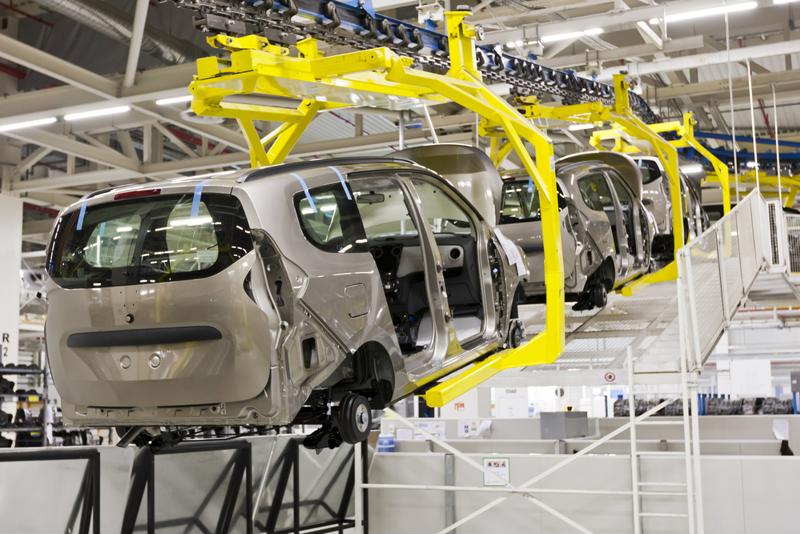Chip shortages continue to Impact Auto Tech Innovation
By Max BurkhalterJanuary 28, 2022
The Internet of Things (IoT) is responsible for tech breakthroughs in a multitude of industries. Data collected and shared between billions of physical devices around the world has enabled advances in all aspects of data intelligence. One sector significantly impacted by the tech revolution is the automotive industry, with end-user applications like autonomous driving and interactive digital displays. However, a continued computer chip shortage is undercutting the impact of advanced tech on vehicles.
Semiconductor chips, necessary for a variety of features today's driver has come to count on, are continually in demand and a worldwide shortage has upended not only the rate of advancement in tech available to end users, but the availability of automobiles themselves.
Contrasting future outcomes of tech innovation with continued disruption caused by shortages, here are some significant IoT markers for the auto space in 2022.
The semiconductor situation
Cheaper. Faster. The auto industry turned to silicone-based semiconductor microchips for a multitude of reasons, eschewing the tubes and dials of traditional computer parts for a more efficient alternative. Auto manufacturers weren't the only ones – virtually every appliance, tool and system in our society is equipped with smart tech as part of efforts to ramp interconnectivity and enhance functionality. So when a chip shortage began to impact all facets of industry in 2020, the auto industry was among many that felt the squeeze.
CNBC traces the origins of the chip shortage to a veritable perfect storm of circumstance; a decline in automobile sales and the onslaught of a global pandemic contributed to varying degrees. With the supply chain shortage continuing into 2022, the ramifications are being felt in all aspects of the car industry.
The big short, continued?
Toyota – the largest automobile manufacturer in the world – forecasts it will miss its goal of 9 million cars produced through March. A similar forecast last September saw a planned 900,000 automobiles reduced to 540,000, a reduction of almost 40%. Although Toyota had remained ambitious in its 2022 planning, the continued chip shortages have led to a refocusing of scale. As the worldwide leader in production, the impact of the Toyota reveal is sure to cascade to manufacturers across the automotive industry.
Autonomous driving 2022
Consumers waiting for the arrival of a self-driving car are sure to be disappointed by the continued chip shortages. If today's semi-autonomous vehicles rely on an array of silicone-based semiconductors in order to assist with parking, the number of chips necessary to collect, process and apply enough data to power a vehicle entirely remotely is astounding. As artificial intelligence expert Lance Eliot detailed for Forbes, a fully self-piloted vehicle is attributed a level designation, with Level 4 or Level 5 classification required in order to attain this lofty, oft-imagined concept in reality.
For all occupants to be truly designated as passengers, an automobile requires chips for both deep learning and machine learning. True AI integration doesn't happen without an assortment of tech and algorithmic data necessary for everything from course prediction to road monitoring. Factor in multiple cameras and sensors responsible for the real-time computation of data collected from every angle imaginable.

Diminishing returns, diminishing features
In efforts to combat the impact on production caused by chip shortages, automakers are reducing use of certain tech-reliant features, hoping the increase in vehicle availability will mitigate damage caused by ongoing and unpredictable gaps.
Some manufacturers aim to eliminate wireless charging support and extra key fobs. The Verge outlines the rollbacks some features are experiencing. Select Dodge Ram models are steering away from a standard feature intelligent rear view mirror. GM has opted away from features such as automatic stop-start and Tesla has done away with passenger side lumbar support. The choices, while impacted by the shortages, are strategic. Tesla data on its Model 3 and Model Y EVs indicates usage of passenger lumbar support control was virtually non-existent, making the decision one of efficacy and not simply scarcity.
Continued resourcefulness will play a role in delivering on manufacturing projections if tech availability concerns are not addressed in the coming months.
Increasing cost
It is not only limited features facing car buyers in 2022. The force of supply and demand drives the economy, and the need for semiconductor chips has had proportionate effects on automobile cost.
Sticker prices for new vehicles rose 14% in December 2021 over the previous year. CNN Business outlined both the sharp price hike and the surprising frequency with which Americans purchase new vehicles. If nearly 40% of households are set to look for a new automobile this year, what numbers will stare back at them from pricing information adhered to shiny new windows?
On the road again
Perle is working on technology tools that can assist industries seeking to make life on the road easier. Read about our Intelligent Transportation Solutions (ITS) to learn how Dynamic Message Signs are impacting the road ahead.



